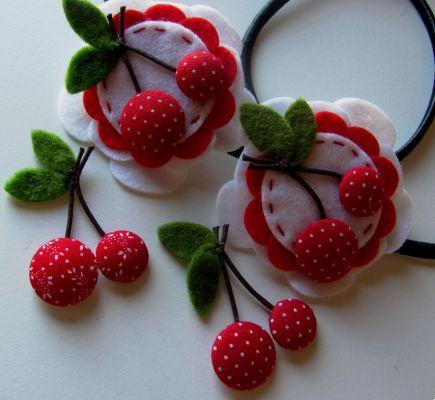
«I would like to do with you what spring does with cherry trees» Pablo Neruda.
It happens very often to turn to nurseries and find among the hedge plants or, more generally, garden furniture, shrubs capable of producing fruits similar to common cherries and sometimes related to them.
Knowing how to recognize these shrubs gives the possibility to create hedges or green spots in the garden very useful for those interested in tasting tastes forgotten or, much more often, ignored; not only as regards the fresh fruit but also for the infinity of products that can be obtained from it, from extracts to ice creams to jams.
Cayenne cherry
Also known by the Brazilian name «PitangaOr with the English name "suriname cherry", the cayenne cherry (Eugenia uniflora) is a small tree, with a tendency to develop into a shrub form.
It grows and develops quickly and without many problems and is therefore perfect as hedge plant or to fill flower beds. It produces a fruit, also called pitanga or cayenne cherry, similar to a cherry with a waxy surface and a peculiar shape, with a sort of eight swellings similar to the ribs of pumpkins.
Around the seed the fruit has little pulp to offer, but from strong aromatic and floral flavor, very persistent, which maintains the sensation of having an intense perfume in the mouth.
It is a fruit very rich in vitamin C and in its phytocomplex there are substances that make it antioxidant, anti-inflammatory, antihypertensive, antimicrobial, antifungal, antidiabetic, analgesic and anticancer.
The level of ripeness of the fruit can be found thanks to the color: the darker the fruit, the more ripe it is and, consequently, sweet.
Cherry, a tasty and healthy fruit
Nanking Cherry
Unlike the cayenne cherry, the Nankino cherry trees truly belong to the the genus Prunus like all cherry trees proper, in fact its scientific name is Prunus tomentosa.
It prefers to develop into one shrubby form, which rarely exceeds three meters, making it aexcellent hedge plant, very ornamental when it blooms in white.
While in China they are mainly used for honey, in the West it is possible to dedicate oneself much more easily to the harvest of Nanjing cherries, fire red color, slightly smaller than common cherries, which usually feed many birds.
They are fruits rich in vitamins and antioxidants, are rehydrating, antibacterial and, if dried, are ideal for combating discomfort in the respiratory tract.
Collecting the numerous fruits that crowd the low branches of the shrub is very easy and enjoy it sour sweetness it's a great pastime in the summer.
More hedge cherries
All possible varieties of so-called sour cherries, as sour cherries, the morello cherries and amarena; but also the rarer cherries such as yellow muscatel (or Japanese cherry) or the white corn; to finish with the various hybrids and crosses as the suregio (plum-cherry) or the cross between cherry and amol.
Le sour cherries, sometimes called bitter cherries or improperly grouped together under the name of sour cherries, respond to the scientific name of Prunus.
These fruits are precious as they are rich in melatonin and numerous Vitamins and agents antioxidants like anthocyanins.
La moscatella yellow, if properly pruned and treated, develops bushy and produces typical yellow cherries, with a muscat flavor, brought to light after it seemed to have disappeared for centuries.
Among the hybrids we mention the suregio, an intriguing cross between plum and cherry which, with appropriate work, can be converted into an elegant hedge element.
Properties and uses
All the fruits described above are generally easy to pick due to the shrub structure of the plant.
Unlike cherries proper, hedge cherries have lower sugar content, or they contain interesting mixes of levose and fructose instead of other sugars less suitable for diabetics.
The range of vitamins is also generally more extensive than that of normal cherries, although these can generally have higher vitamin B or vitamin A spikes.
If you are not used to the wilder flavors you can always turn these fruits into excellent jams or use them in addition to other fruits or other vegetables in centrifuged and extracts.
Discover the properties of prickly pears and sour cherries among the forgotten fruits
To learn more:
> Cherries, properties and benefits
> The period of cherries


























